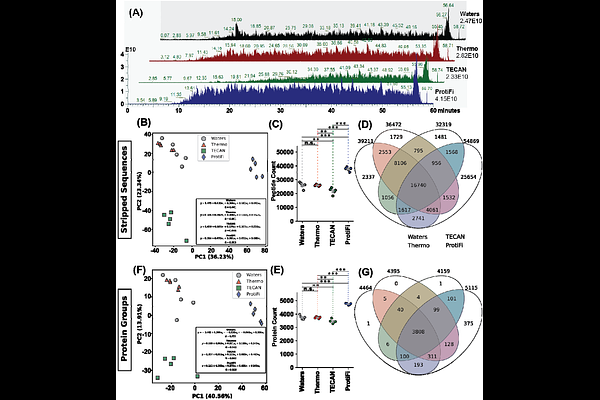Evaluating First-Pass, High Protein Capacity Desalting Techniques For Phosphoproteomics Applications

Evaluating First-Pass, High Protein Capacity Desalting Techniques For Phosphoproteomics Applications
Callahan, A.; Mojumdar, A.; Salomon, A.; DaSilva, N. A.
AbstractMany commercial desalting products exist for pre-MS peptide cleanup, although few exist that can handle the high protein input ([≥] 4 mg) required for phosphotyrosine enrichment. For these desalting products, the technical aptitude required for effective and organized desalting is often a barrier to entry for new users. Here, we evaluate four commercially available desalting techniques with varying degrees of automation, operational organization, and chemistries to determine the most cost-effective, user-friendly, and sensitive technique for protein profiling and phosphotyrosine (pY) enrichment. We find that TECAN Narrow Bore Extraction (NBE) products are the most cost effective per sample and least difficult to use, whereas ProtiFi S-Trap are the most expensive per sample and Pierce C18 spin columns have the worst operational organization. ProtiFi S-Trap vastly outperforms other desalting methods for peptide sequencing and protein profiling applications, uniquely identifying 25,654 unique peptide sequences and 375 unique proteins. Consistently, ProtiFi S-Trap samples show the deepest pY sequencing after Src SH2 superbinder enrichment, leading to the highest identification of significantly changing, biologically relevant pY sites in a Jurkat T cell signalling model. Our data show that ProtiFi S-Trap columns provide high peptide recovery, thus increasing meaningful pY site identification.